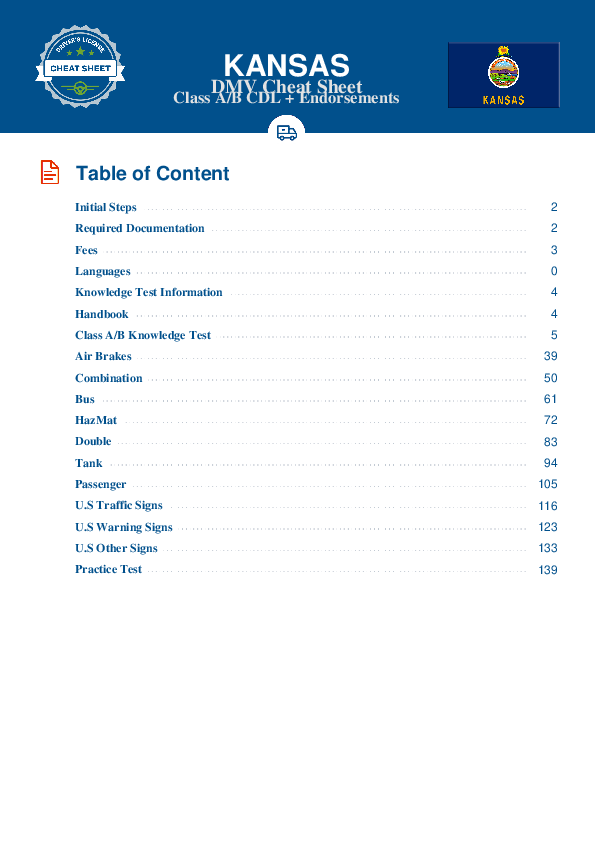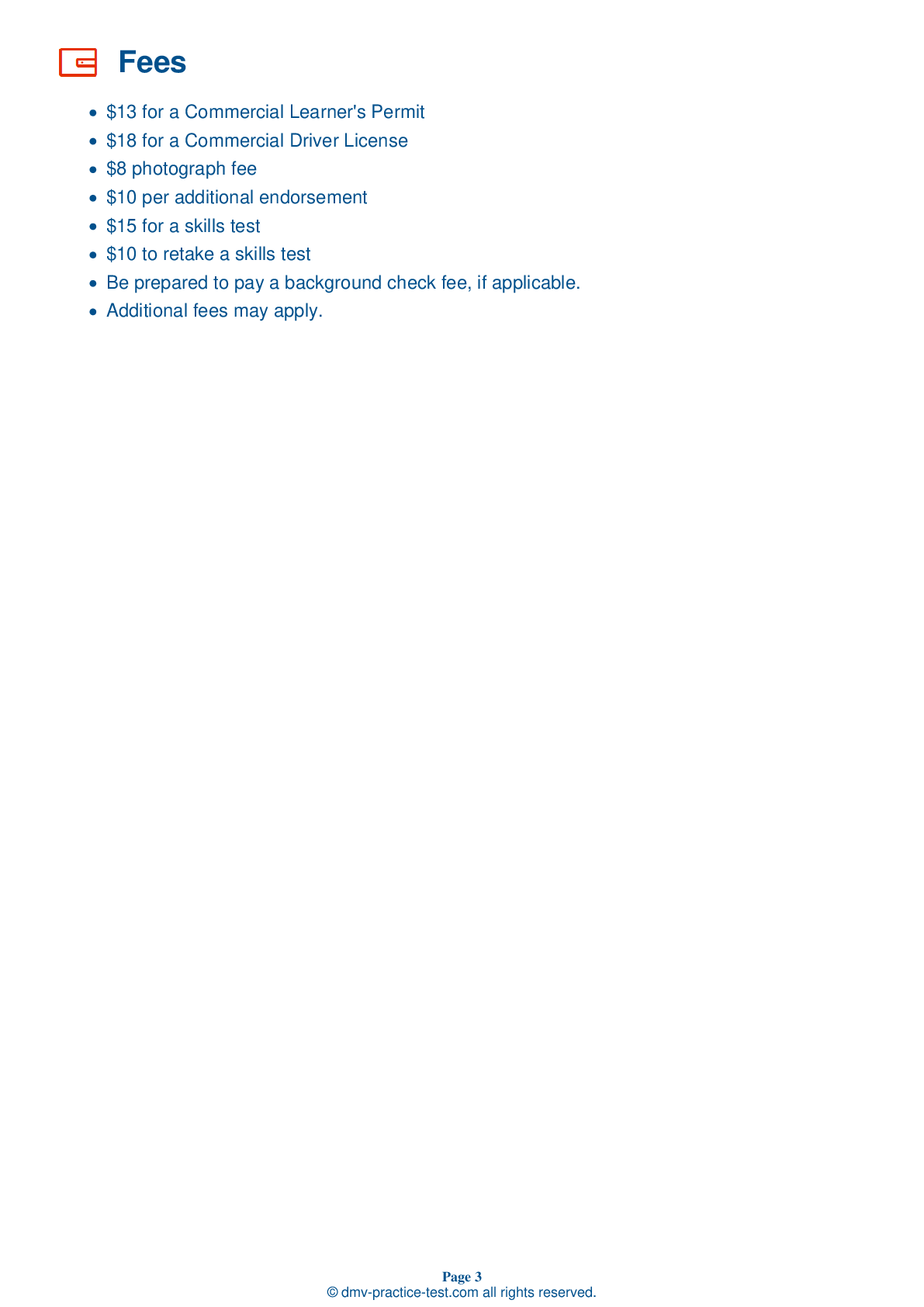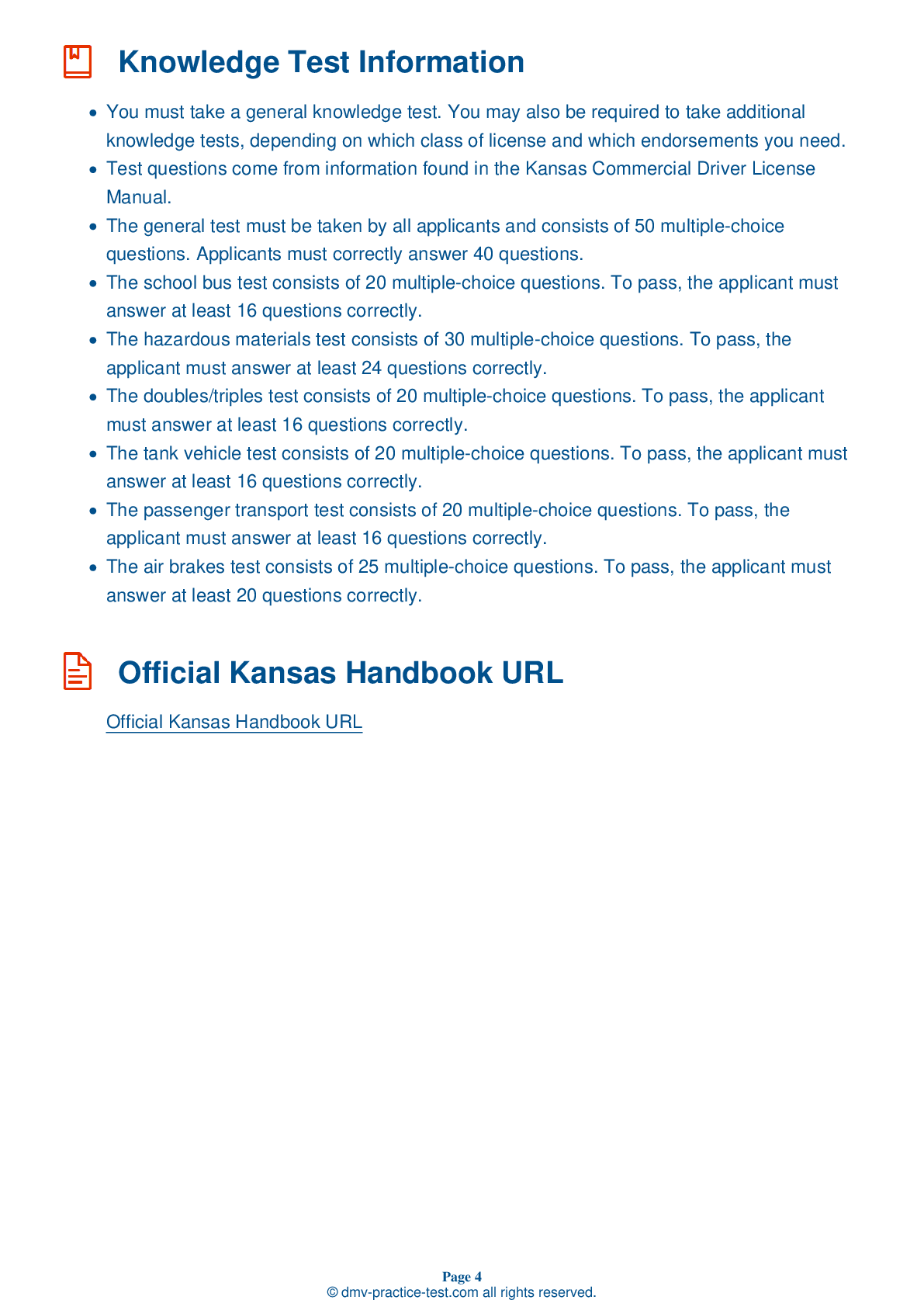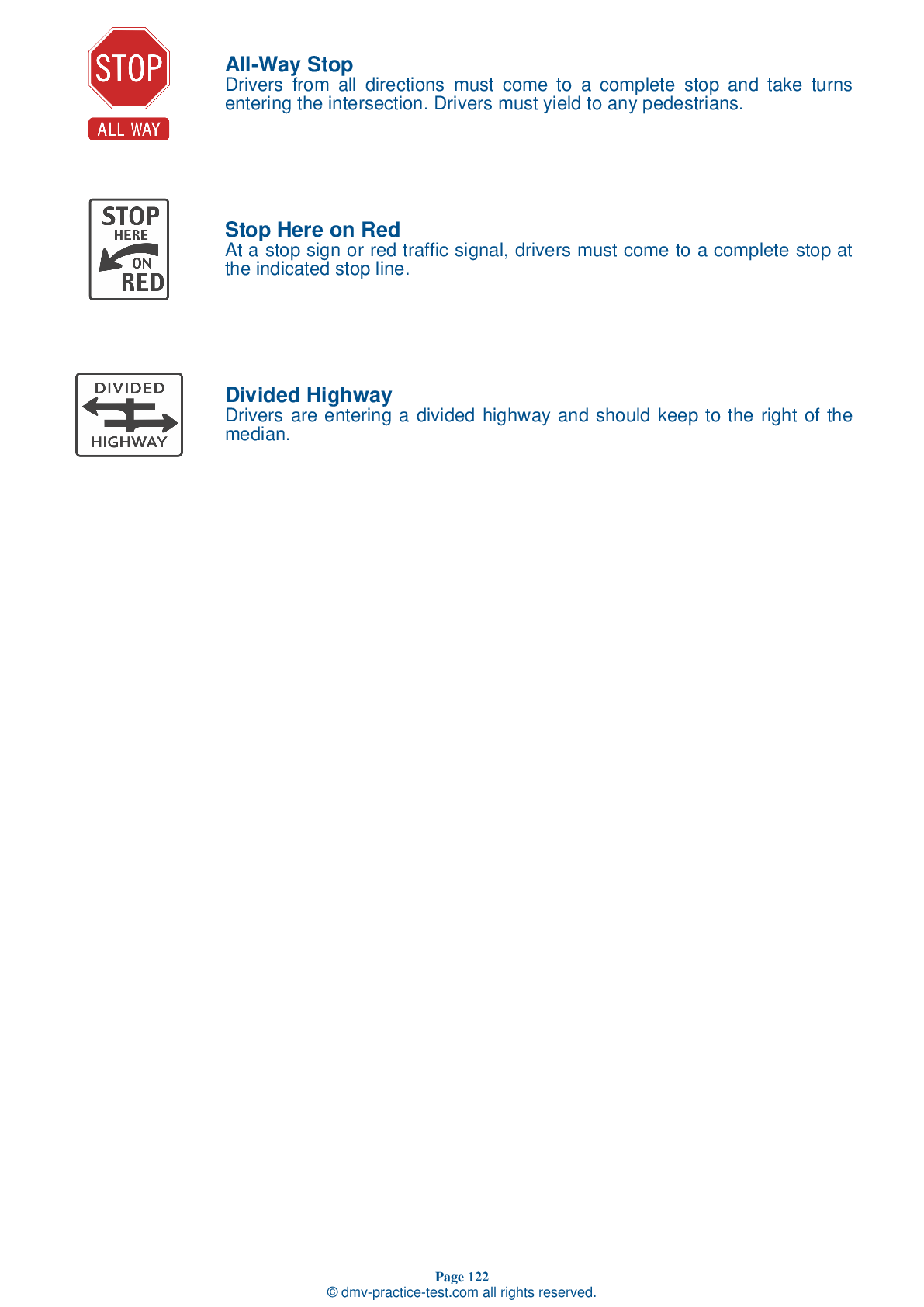Air Brakes Endorsement Test | Kansas 2025 #1 Page 3 of 4
Train for FREE online with our Kansas CDL air brake test. The official exam test consists of several obligatory parts, with all of them checking your knowledge of different blocks of road rules. If you need to obtain a KS Class A/Class B driver license in 2025, practice as much as possible. Free sample tests published on our website will help you check and improve your knowledge and boost your grades. Please bear in mind that the requirements for CDL may vary from state to state.
13 . When traveling down a steep downgrade:
On a downgrade, the braking effect of the engine should be your primary method of controlling speed. Shift down to a lower gear before starting down the hill and save the brakes for additional slowing or stopping that may be required by road or traffic conditions.
14 . When inspecting your brakes, a slack adjuster should move ____ from where it is attached to the push rod.
Check each slack adjuster after setting wheel chocks and disengaging the parking brake. Pull the slack adjusters to make sure they do not move more than about one inch from where the push rod is attached. If they move more than one inch, they may be out of adjustment and will need to be fixed.
15 . What is removed when an air tank is drained?
In an air brake system, the air storage tanks are equipped with drains to allow water and compressor oil to be removed. The water and oil can damage the brakes if left to accumulate in the system.
16 . Before driving a vehicle with a dual air brake system, you must wait for the air compressor to build a minimum of ____ in both the primary and secondary systems.
Before driving a vehicle with a dual air brake system, you should wait for the air compressor to build up at least 100 psi in both the primary and secondary systems.
17 . Dollies equipped with ABS are required to have malfunction lamps located where?
A dolly equipped with an Anti-Lock Braking System (ABS) is required to have a yellow malfunction lamp located on its left side.
18 . Air tank drains:
In an air brake system, the air storage tanks must be drained to remove accumulated water and compressor oil. Failing to do so can cause damage. Manually operated drains should be used at the end of each day of driving.
See the exact questions that will be on the 2025 Kansas DMV exam.
99.2% of people who use the cheat sheet pass the FIRST TIME
Lillian MCcranie explains how our CDL study guide was helpful in passing the exam and recommends it to everyone.
Cameron tells us how he purchased the CDL exam, and found it to be a useful tool which helped him pass the exam and find a job.



